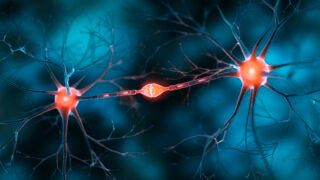USC researchers develop tools to simplify the interpretation of brain images
BrainSuite opens the door for sophisticated large-scale studies
Cognitive neuroscientists, clinicians and researchers rely on brain imaging to unlock the secrets of the functioning brain.
Richard Leahy and his team at the USC Viterbi School of Engineering’s Ming Hsieh Department of Electrical Engineering are developing new methods to merge images of the brain’s anatomy, connectivity and function and then extracting key details from these complex data sets.
To make these latest developments available to neuroscientists and clinical researchers, Leahy and his team have developed a collection of open-source software tools called BrainSuite.
“There have been remarkable improvements in our ability to image the brain, as well as a tremendous growth in the use of neuroimaging over the 15 years we have been developing BrainSuite,” Leahy said. “This has created an increasing demand, both here at USC and at other research institutions, for sophisticated but accessible software for analyzing brain data.”
Interconnected regions
BrainSuite allows users to identify specific areas in the brain and to track changes over time. By morphing 3-D images from multiple people onto a common brain atlas, BrainSuite can compare differences in size, shape or even function across populations. Using a technique called diffusion imaging, BrainSuite is also able to visualize the wiring in the brain, identifying which regions are most strongly interconnected.
What used to take neuroscientists hours of painstaking work can now be done with a few simple button presses.
Justin Haldar
“Software like BrainSuite provides the neuroimaging community access to tools that greatly simplify the interpretation of brain imaging data,” said Justin Haldar, assistant professor in the Ming Hsieh Department of Electrical Engineering and one of the current developers of BrainSuite. “What used to take neuroscientists hours of painstaking work can now be done with a few simple button presses, which opens the door for new kinds of sophisticated large-scale studies of the brain.”
The software, which has been used in almost 200 published studies, is being developed with support from the National Institute of Neurological Disorders and Stroke.
“Here at USC, we are working with neuroscientists Hanna and Antonio Damasio at the [USC Dornsife] Brain Creativity Institute,” Leahy said. “They are leading a study with the Youth Orchestra Los Angeles on the effects of intensive music training on early brain development.”
Music education and development
The study will follow a group of children over a five-year period. Brain imaging studies will be correlated with measures of emotional, cognitive and social development relative to a control group. Using BrainSuite, these imaging studies can lead to an improved understanding of how music education affects the development of these children. The study is only in its second year, but preliminary results are already intriguing.
“It is very satisfying to translate our research into useable practical tools, and to see the excitement ripple through our collaborators when we give them a cutting-edge new feature to play with,” Haldar said.
“BrainSuite tools are flexible and can be applied to these broad areas of neuroscientific inquiry,” Leahy added. “Our collaborators continue to come up with exciting new questions that require novel image analysis tools which will keep us busy for a long time to come.”



